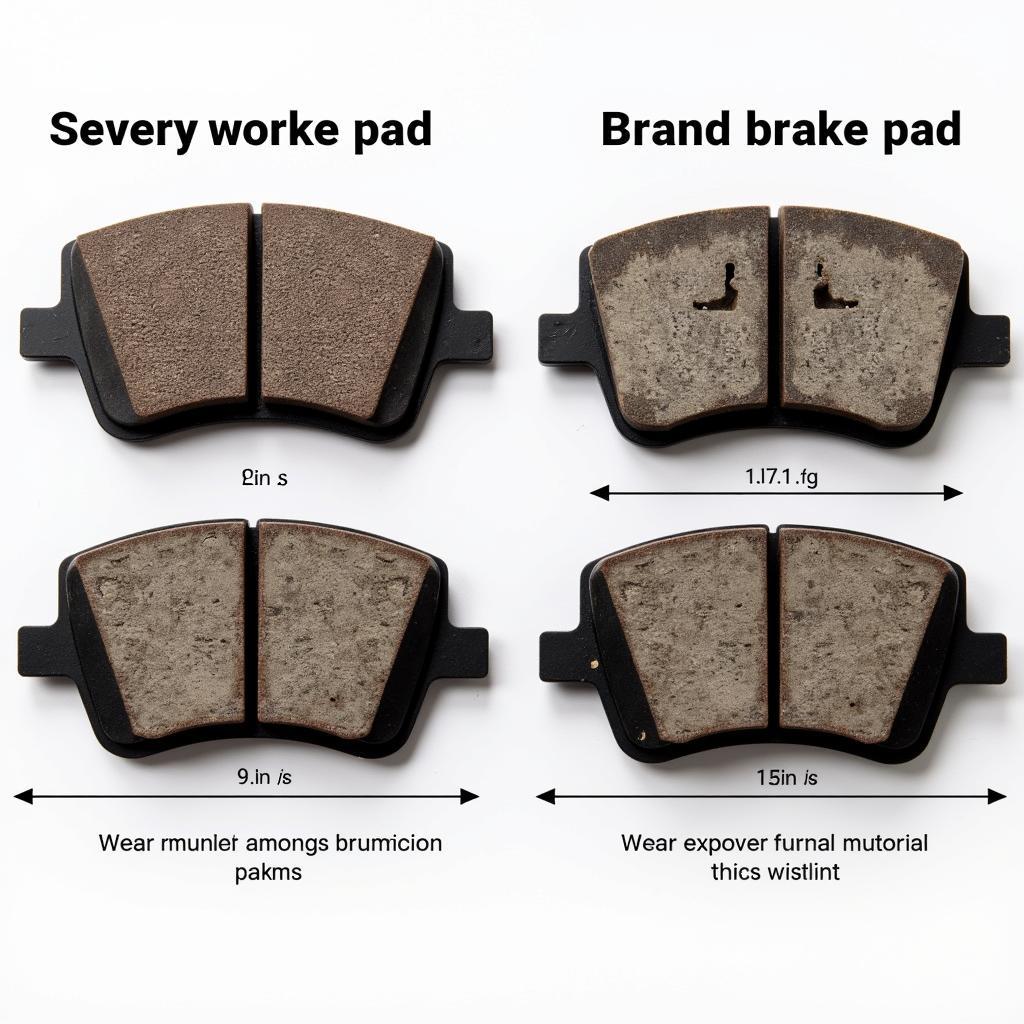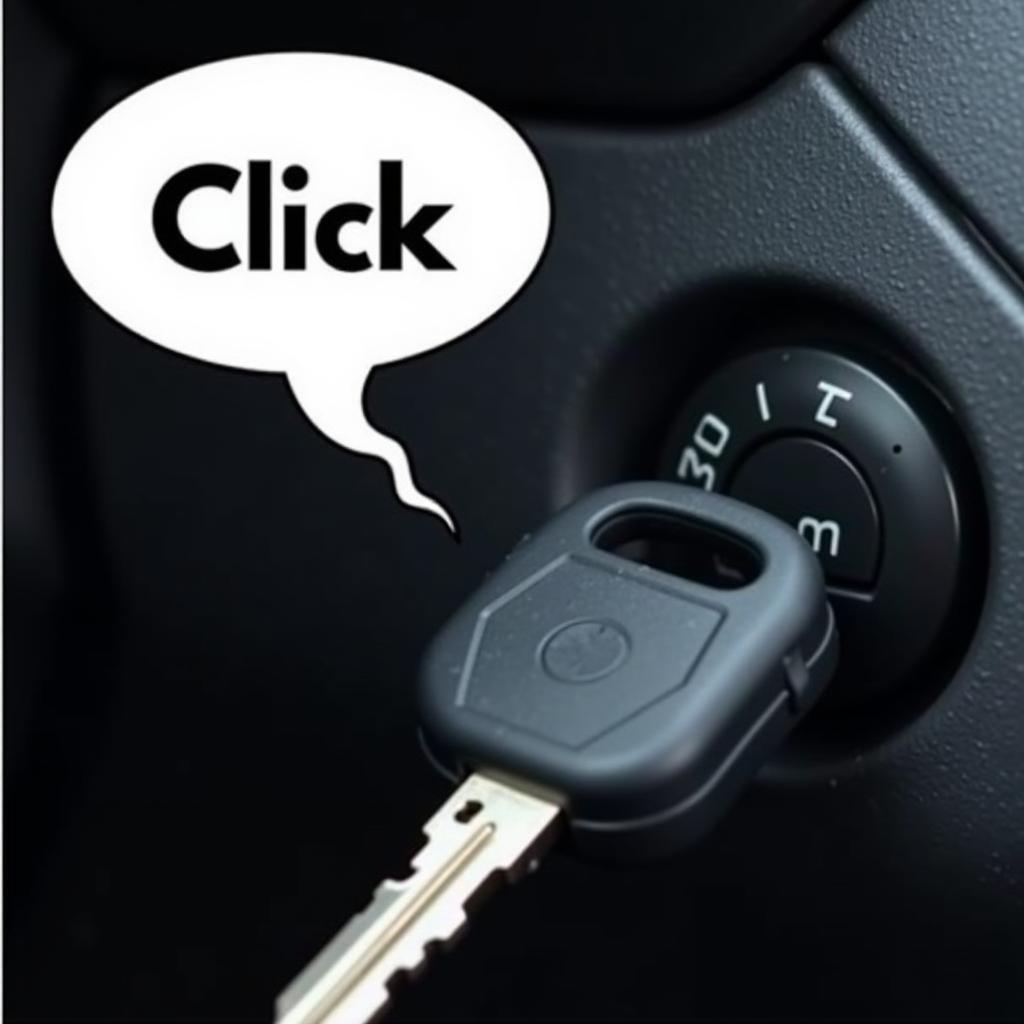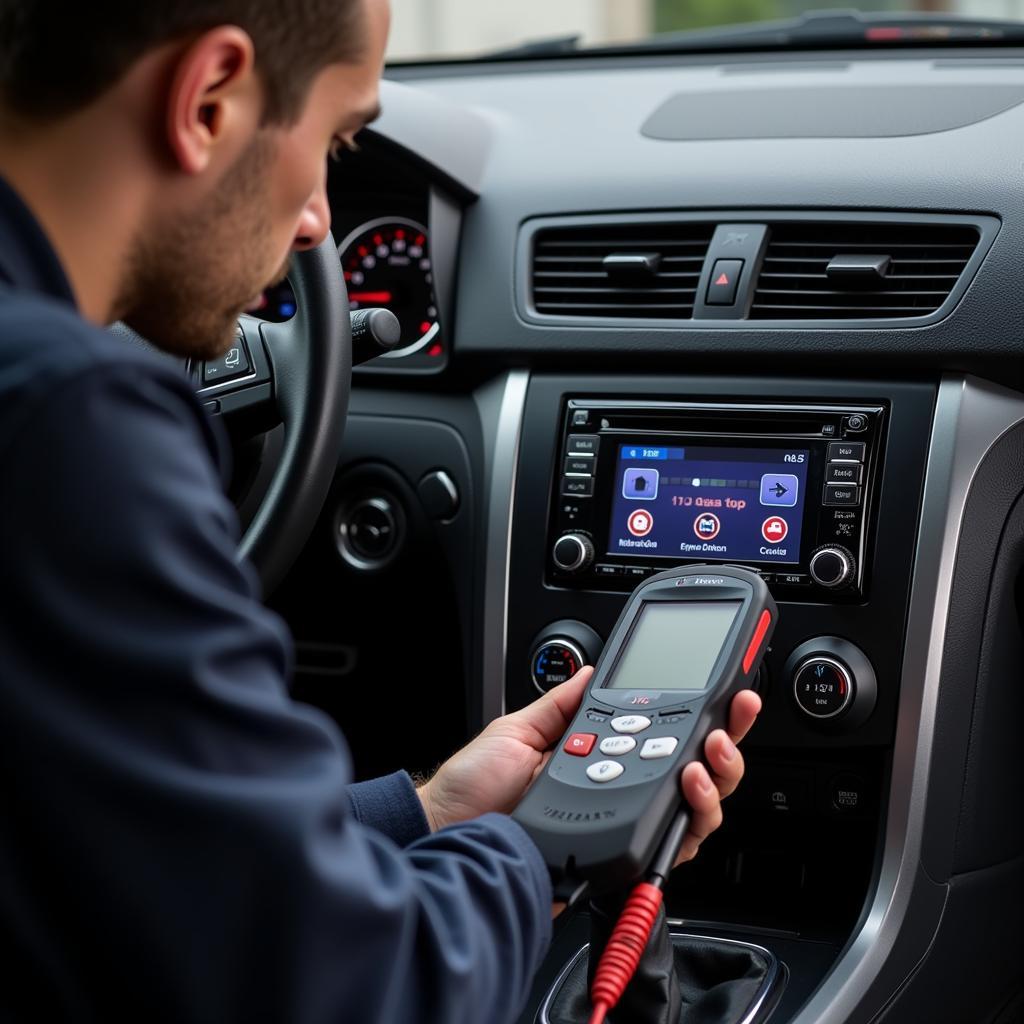That annoying little light on your dashboard – the brake pad warning light – is on. Now you’re wondering, how long can I keep driving? Well, let’s dive into that. It’s a question we get a lot at CarDiagTech, and it’s essential to understand what’s going on. brake pad warning sound can be alarming, but understanding their meaning is crucial.
Understanding the Brake Pad Warning Light
The brake pad warning light isn’t just a suggestion; it’s a serious warning. It signals that your brake pads are wearing thin and need attention. Ignoring it can lead to costly repairs and dangerous driving conditions.
Why is the Brake Pad Warning Light On?
This light is triggered by a small sensor embedded within your brake pads. As the pads wear down, this sensor eventually contacts the rotor, completing a circuit and illuminating the warning light. This system is designed to give you ample time to replace your brake pads before they become dangerously thin.
- Sensor Activation: The light comes on when the brake pad material wears down to a predetermined level.
- Safety Feature: It’s a critical safety component designed to prevent brake failure.
- Don’t Delay: Ignoring the light can lead to rotor damage and significantly reduced braking performance.
How Long Can You Drive with the Light On?
The million-dollar question. There’s no one-size-fits-all answer. While you might be able to drive for a short period, continuing to drive with the brake pad warning light on is highly discouraged.
Factors Affecting Driving Time
Several factors influence how long you can safely drive:
- Driving Habits: Aggressive braking wears pads faster.
- Driving Conditions: City driving tends to wear pads faster than highway driving.
- Brake Pad Quality: Higher-quality pads generally last longer.
- Vehicle Weight: Heavier vehicles put more stress on brakes.
 Worn Brake Pads vs. New Brake Pads
Worn Brake Pads vs. New Brake Pads
“Ignoring your brake pad warning light is like ignoring a low fuel light – eventually, you’re going to run into trouble,” says John Smith, a seasoned automotive technician at a leading repair shop.
What to Do When the Light Comes On
The safest course of action is to have your brakes inspected by a qualified mechanic as soon as possible. They can determine the remaining pad life and recommend necessary repairs. If you notice a rav4 brake warning light, don’t hesitate to get it checked out promptly.
Steps to Take:
- Schedule an Inspection: Don’t delay. The longer you wait, the more damage you risk.
- Avoid Hard Braking: Drive gently to minimize further wear.
- Prepare for Replacement: Brake pad replacement is a routine maintenance item.
2015 audi a6 brake pads warning light reset procedures can be complex, so it’s best to consult a professional.
“Regular brake inspections are crucial for maintaining vehicle safety. Don’t wait for the warning light to come on,” advises Sarah Jones, a certified brake specialist with over 20 years of experience. If you are experiencing issues with a brake warning light mazda 3, it is crucial to address them quickly.
Conclusion
Driving with the brake pad warning light illuminated is risky. While you might manage a short distance, ignoring it can jeopardize your safety and lead to expensive repairs. Address the issue promptly by scheduling a brake inspection. Don’t gamble with your safety – get your brakes checked today.
Changing a change battery bmw key fob might seem simple, but brake repairs are best left to the professionals.
FAQ
- Q: Can I reset the brake pad warning light myself? A: While possible in some vehicles, it’s best to have a mechanic diagnose and fix the underlying issue.
- Q: How much does it cost to replace brake pads? A: The cost varies depending on the vehicle and the type of brake pads used.
- Q: How often should I have my brakes inspected? A: It’s generally recommended to have your brakes inspected at least once a year or every 12,000 miles.
- Q: What are the signs of worn brake pads besides the warning light? A: Squealing or grinding noises, vibrations in the brake pedal, and increased stopping distance are all potential indicators.
- Q: Can I replace my brake pads myself? A: While possible for experienced DIYers, brake work requires specialized tools and knowledge. It’s often safer to have a professional handle the job.
- Q: What happens if I completely ignore the brake pad warning light? A: Eventually, your brake pads will wear down completely, potentially causing damage to the rotors and significantly reducing braking effectiveness. This can lead to dangerous driving situations.
- Q: Is it safe to drive with the brake pad warning light on for a short trip to the mechanic? A: While driving a short distance to a nearby mechanic might be possible, it’s still recommended to exercise extreme caution and avoid hard braking. If possible, have the vehicle towed or get a ride to the mechanic.



